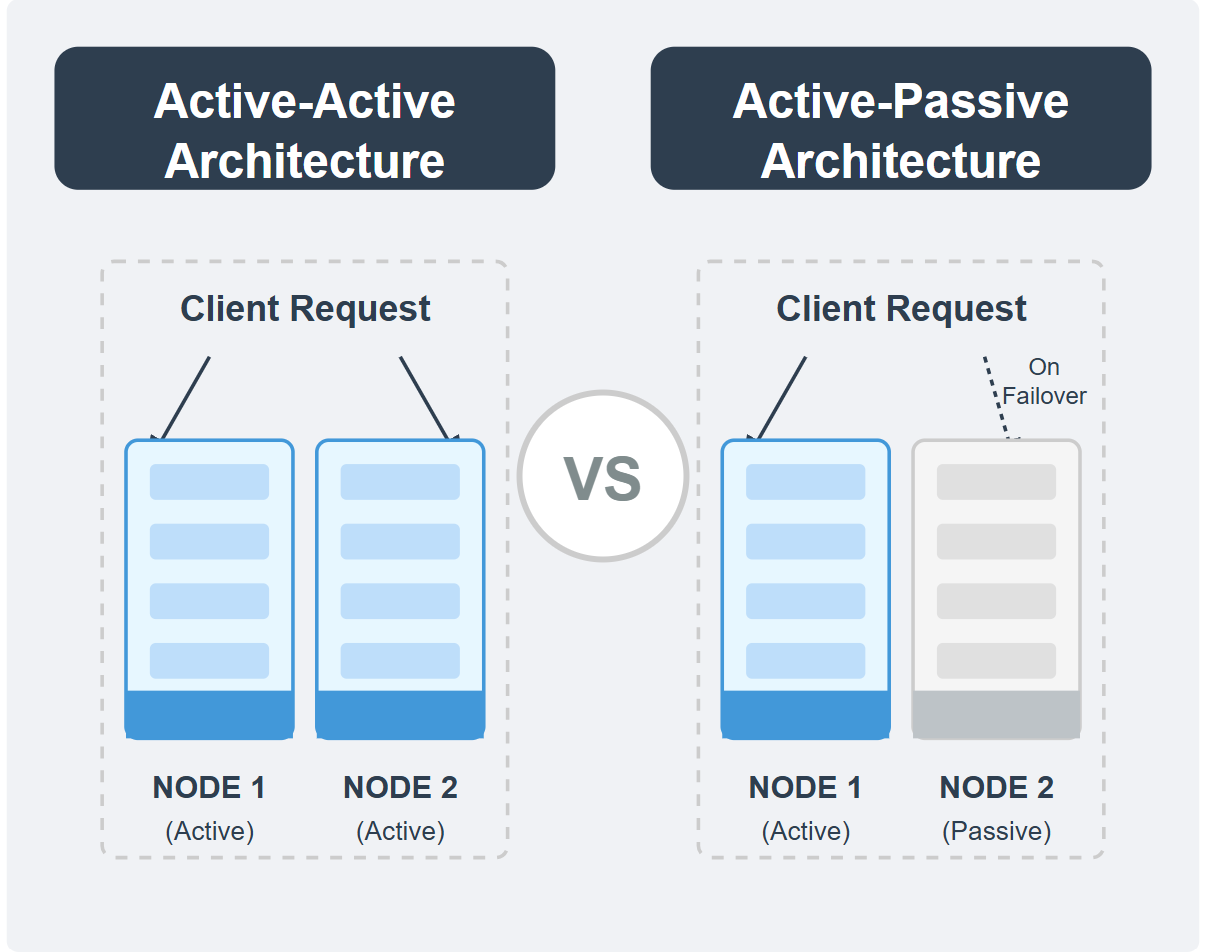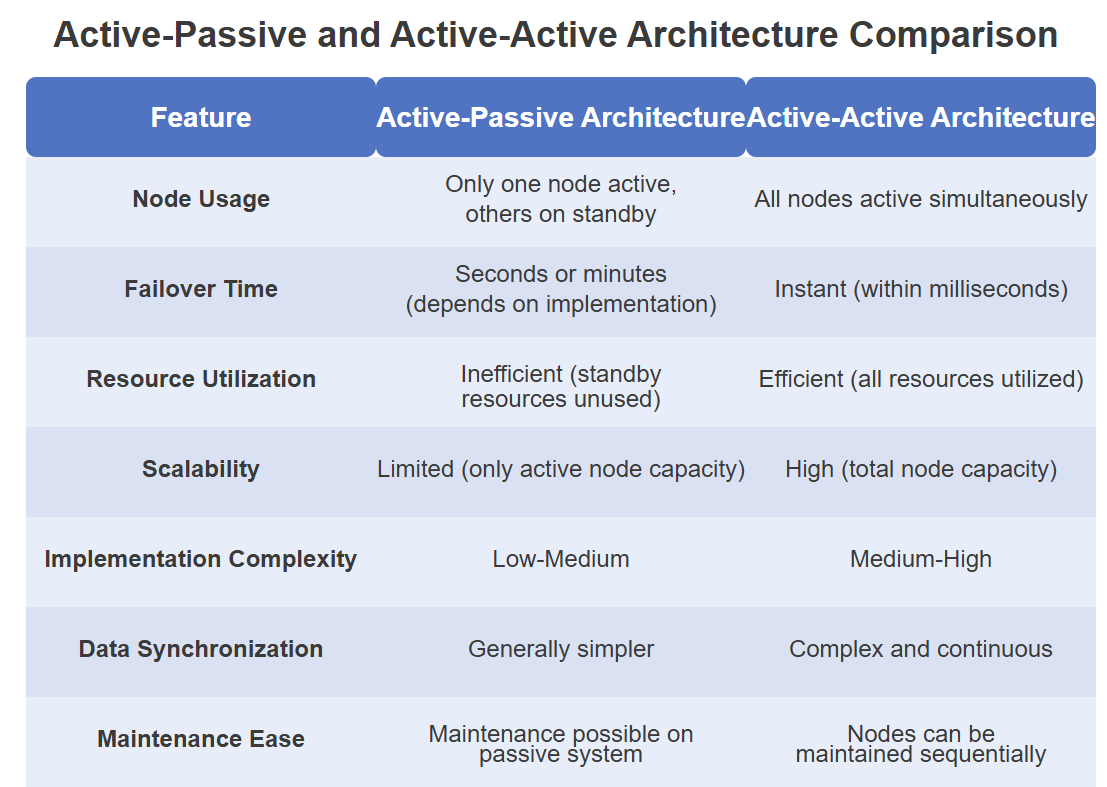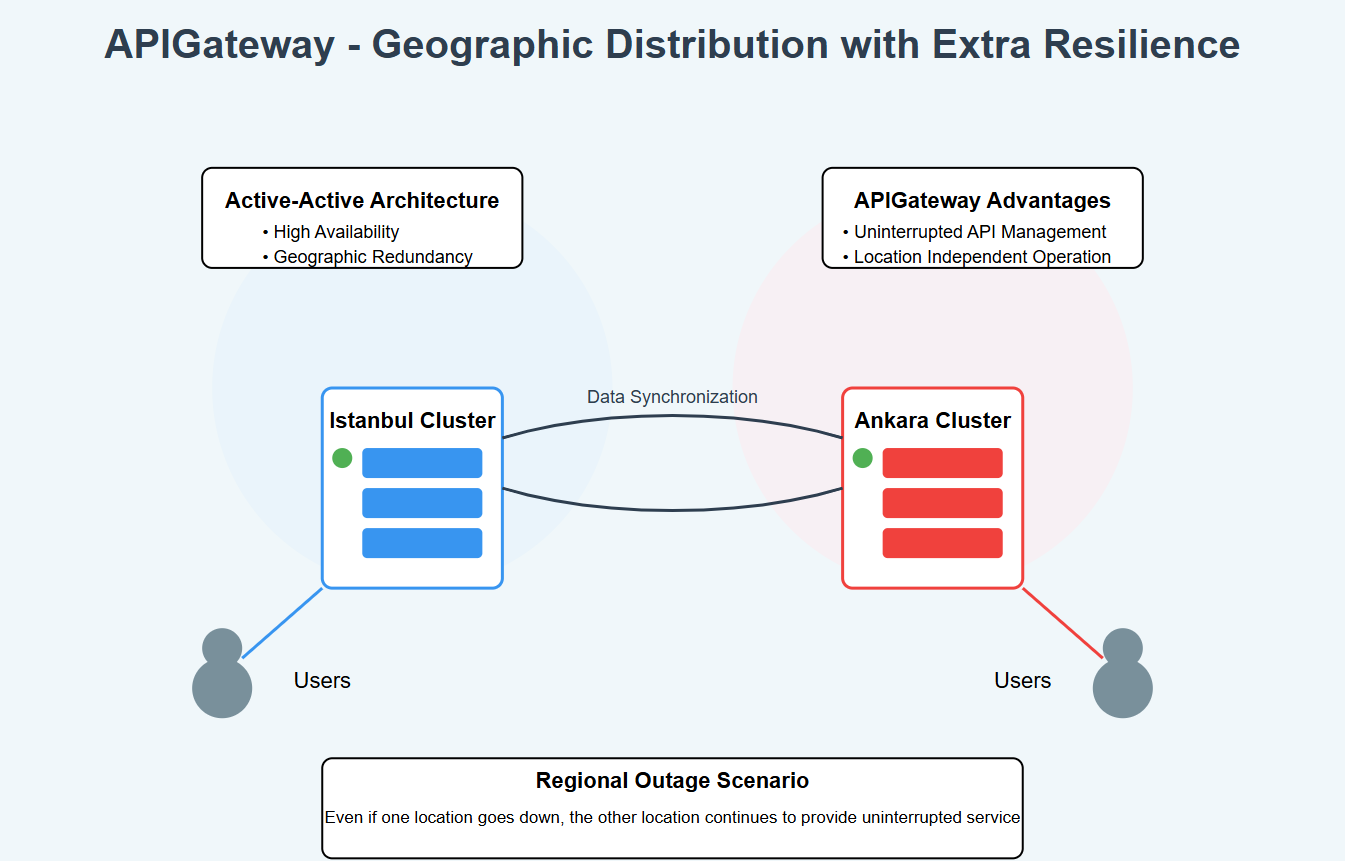Active-Active Architecture and SPOF Risk Elimination with Apinizer
One of the biggest expectations of API management teams is that the system should work on an architecture that is accessible, reliable and flexible under all circumstances. Because today, it is not enough to just offer an API: That API needs to never stop, be accessible from anywhere and respond instantly.
What if your API Gateway that manages this traffic becomes inaccessible?

Single Point of Failure (SPOF) Problem
One of the most important weaknesses of traditional API management solutions is the risk of “Single Point of Failure” (SPOF). SPOF refers to the presence of a single component in the system that can bring down the entire system if it fails. For example, if you manage all your API traffic through a single API Gateway, when this gateway stops working, all your API services are interrupted.
This is where Apinizer's active-active architecture support comes into play. Thanks to this structure, which responds to basic expectations such as high availability and flexibility, you can not only keep your API infrastructure afloat, but also make it more reliable and sustainable.
So, let's take a closer look at what an active-active architecture approach is and what advantages it offers to businesses.
What is Single Point of Entry and Active-Active Architecture?
The concept of “Single Point of Entry” means that all requests enter the system through a single point. While this provides advantages in terms of security and management, if this single point fails, the entire system is affected. Apinizer's active-active architecture eliminates the risk of Single Point of Failure while maintaining the advantages of Single Point of Entry.
While Apinizer logically acts as a single API Gateway, it physically runs on multiple active nodes. Thus, while providing a single entry point for the outside world, it continues to provide uninterrupted service even if any node fails thanks to its background architecture.
What is Active-Active Architecture?
In an active-active architecture, multiple instances (for example, application servers or databases) are active at the same time. These instances share incoming traffic, usually through a load balancer. If one of these instances fails, the others continue to operate and there is no interruption in service.
Advantages:
- High Availability: If one of the system components goes down, the others continue to provide service, eliminating the risk of SPOF.
- Load Balancing: Since all components work at the same time, a more balanced resource utilization is provided throughout the system.
- Scalability: New components can be easily added, the system can scale horizontally.
- Performance Improvement: Since multiple servers are running at the same time, more operations can be performed.

The advantages of active-active architecture make a significant difference, especially in areas such as API management where uninterrupted service is vital.
Apinizer's support for this architecture makes your API infrastructure reliable and future-ready by eliminating the risk of SPOF and offers you a powerful advantage in your digital transformation journey.
The Key to High Accessibility: Active-Active Architecture
The active-passive architecture commonly used in conventional systems consists of a main system and one or more backup systems connected to it. When the main system fails, the backup system takes over. While this approach is valuable in itself, it has drawbacks such as downtime during transition, inefficient use of backup resources and still carries a risk of SPOF.

Active-active architecture, on the other hand, offers a completely different approach and let's examine the advantages in more detail below.
Benefits of Active-Active Architecture
High Availability (HA) and SPOF Elimination
Apinizer's active-active architecture offers a theoretical availability of 99.999% and above. This means that annual downtime is only minutes. Most importantly, since each node can operate independently, the risk of Single Point of Failure is completely eliminated.
Enhanced Scalability
When your API traffic spikes, horizontal scaling is easy in an active-active architecture. When you add a new node:
- Quickly integrates into the system
- Configurations are automatically synchronized
- Traffic starts to stabilize immediately
Sustainable Operation and Maintenance
Active-active architecture also offers great operational advantages:
- There is no need to shut down the entire system for maintenance.
- Nodes can be updated sequentially, enabling seamless upgrades.
- Problem isolation is easier, the problem node can be removed from traffic.

API Interruptions: What's the Cost to Your Business and Utilities?
Today, the majority of customers access your services through APIs. Your payment systems, mobile apps and partner integrations rely on these APIs.
If your API gateway suddenly becomes inaccessible. Every minute of downtime:
- Can lead to direct loss of revenue.
- Damages customer trust.
- Disrupts operational processes.
- May prevent the fulfillment of legal obligations.
- May cause disruption of public services.
Various industry analyses show that the hourly cost of API outages in large-scale organizations can reach tens of thousands of dollars. This shows that the resilience of your API infrastructure is not just a choice, but a critical requirement for business continuity.
Uninterrupted API Service with Apinizer
In the light of all these advantages, thanks to the active-active architecture support offered by Apinizer:
- You make your API infrastructure free from SPOF risk and make it more resilient and reliable against outages.
- Use your system resources more efficiently
- Manage maintenance and update processes with close to zero downtime.
- You build a scalable structure that can respond to increasing user demands instantly.
Thus, you both guarantee your business continuity and provide your customers with an always accessible, fast and trustworthy digital experience.
How to Achieve Active-Active High Availability with Apinizer
Apinizer effectively utilizes Kubernetes' built-in nodeAffinity feature to achieve high availability. With this Kubernetes capability:
- Pods can be deliberately scheduled on specific nodes
- It is guaranteed that at least one Apinizer pod runs on each worker node
- All pods are prevented from being scheduled on the same node
By using Kubernetes’ nodeAffinity, you can distribute Apinizer pods evenly across all nodes. For example, if your Kubernetes cluster consists of two physical servers, you can configure Apinizer to run on both nodes.
The main advantage of this setup is: if one server goes down, the Apinizer pods running on the remaining servers continue to operate. This ensures uninterrupted API access.
By leveraging this powerful orchestration feature of Kubernetes, you can achieve true high availability for your Apinizer platform not just in theory, but in real-world scenarios as well.
Extra Durability with Geographic Distribution
Taking a step beyond active-active architecture, Apinizer also supports geographically distributed systems. This approach allows clusters located in physically different locations to operate as a single, unified system. As a result, your system is protected not only against hardware failures but also against broader risks such as natural disasters, power outages, or regional internet disruptions.
Apinizer’s architecture maintains a Single Point of Entry principle while enabling data centers located in geographically distant regions—such as Istanbul and Ankara—to function as parts of the same logical system. Pods actively run in each location, and load is balanced among these pods.
What does this architecture provide?
- Even if the entire infrastructure in one city goes down, the system in the other city continues to operate.
- Geographic redundancy ensures uninterrupted service even in disaster scenarios.
- Load can be dynamically distributed across different locations.
- Users can be routed to the nearest server to optimize performance.

With this approach, Apinizer continues to function regardless of physical location, offering high availability, resilience against regional disasters, and uninterrupted API management.
When all these architectural strategies are combined, Apinizer becomes more than just an API management platform—it becomes the cornerstone of uninterrupted service delivery.
Thanks to active-active and geographically redundant architectures with Apinizer, your API infrastructure remains accessible, continuous, and future-ready under all conditions.